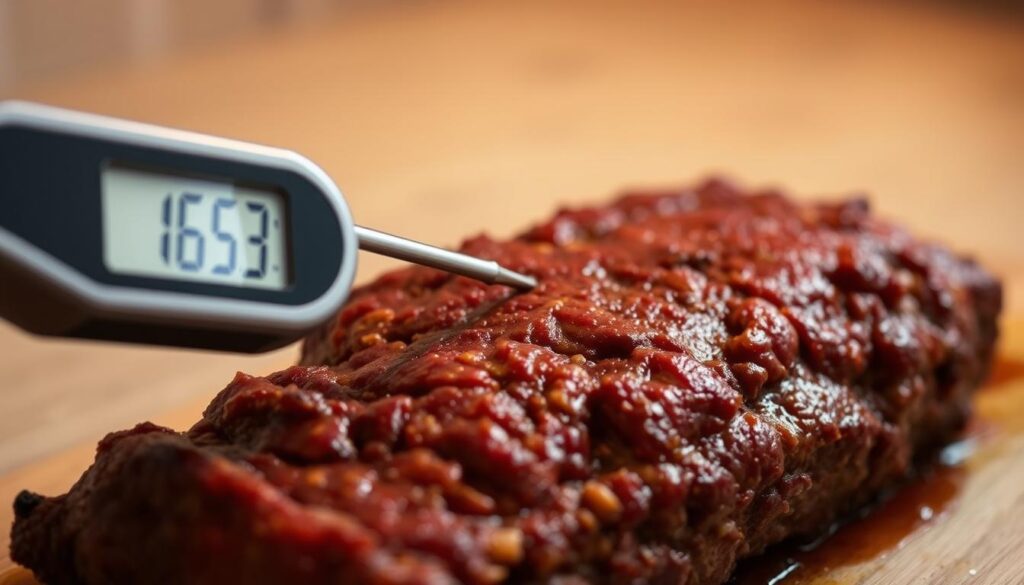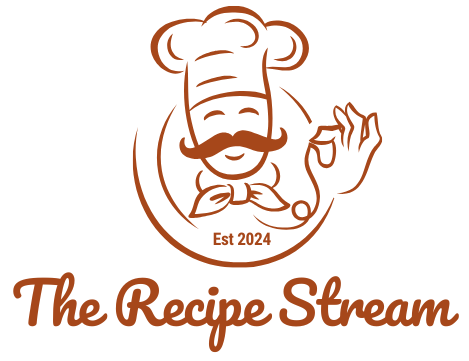There’s something deeply comforting about a well-made meatloaf. It brings back memories of family dinners and warmth. It’s the simple joy of home-cooked meals. Yet, many of us have bitten into a dry or flavorless loaf, far from the ideal.
The quest for the perfect meatloaf is often filled with common mistakes. These mistakes can frustrate even the most seasoned cooks. Knowing these errors is key to a delicious, moist masterpiece from the right fat content to proper seasoning.
Join us as we uncover essential tips to avoid these pitfalls. These tips will ensure every slice served brings joy back to your table.
Table of Contents
Understanding the Importance of Fat Content
The fat in your meatloaf affects its taste and moisture. A meatloaf with too little fat can be dry and tasteless. Ground meats with less than 15% fat, like turkey or chicken, often dry out.
Try mixing different meats for the best results. A blend of ground beef, pork, and veal works well. This mix not only tastes better but also keeps the meatloaf moist.
Why Fat Matters for Moisture and Flavor
Fat is key to a juicy and tasty meatloaf. Ground chuck, with about 20% fat, is a great choice for moisture. The fat bastes the meat while it cooks, adding flavor.
It also helps the ingredients stick together, preventing the meatloaf from falling apart. A mix of lean and fatty meats makes the meatloaf tender and full of flavor.
Choosing the Right Meat Blend
Choosing the right meat mix is crucial for a great meatloaf. A blend of ground beef, veal, and pork works well. Pork should make up 25% to 33% of the mix for enough fat.
Use one teaspoon of kosher salt per pound of meat for flavor. About one large egg per pound of meat helps bind the ingredients. These tips will help you make a moist and tasty meatloaf.
| Meat Type | Typical Fat Content | Recommended Usage |
|---|---|---|
| Ground Beef (Chuck) | 20% | Ideal for moisture |
| Ground Pork | 25%-33% | Enhances flavor |
| Ground Veal | 15%-20% | Provides tenderness |
| Ground Turkey | 7%-15% | Use in combination |
Common Meatloaf Mistakes
When making meatloaf, several common mistakes can affect the taste and texture. Knowing these mistakes can help make your dish delicious. Pay attention to the meats you use and how you mix your ingredients. Small changes can greatly improve the flavor and texture.
Using Lean Meats: The Pitfalls of Low Fat
Lean meats, like ground beef with less than 15% fat, can make meatloaf dry and tasteless. Fat is key for keeping the meat moist and flavorful. The best meatloaf has a fat content of 20% to 30%. This not only adds taste but also keeps the meat from drying out.
Using a mix of meats, like veal, pork, and beef, can make the flavor richer. It also helps keep the meat moist.
Overmixing: How It Affects Texture
Overmixing can make your meatloaf tough and rubbery. When you mix too much, the meat’s proteins get too tight. Mix your ingredients gently to avoid this.
Make sure the mixture is just combined. This will help your meatloaf stay light and fluffy. Adding sautéed veggies can also help with texture, preventing a raw, crunchy feel.
Why Proper Filler Ingredients Matter
Filler ingredients are key to a great meatloaf. The right ones help keep it moist and give it structure. Breadcrumbs and oatmeal are two popular choices, each with its own benefits.
Choosing Between Breadcrumbs and Oatmeal
Breadcrumbs are a classic choice for meatloaf. They help hold everything together and keep it moist. Oatmeal, on the other hand, soaks up more moisture, making the loaf juicier. Plus, oatmeal is healthier, packed with fiber and vitamins.
The Role of Soaked Bread in Moisture Retention
Soaked bread is a game-changer for meatloaf. It’s soaked in liquid before mixing, so it doesn’t soak up the meat’s juices. This trick, called a panade, is crucial for keeping the meatloaf tender and full of flavor.
| Filler Ingredient | Moisture Retention | Nutritional Benefits |
|---|---|---|
| Breadcrumbs | Good | Varies, often lower in fiber |
| Oatmeal | Excellent | High in fiber, vitamins |
| Soaked Bread | Very Good | Depends on type of bread |
Adding Vegetables to Your Meatloaf
Adding vegetables to your meatloaf can make it taste better and feel more moist. Onions, carrots, and celery, known as mirepoix, are great choices. Zucchini, mushrooms, and bell peppers add sweetness and depth. Without them, your meatloaf might end up dry.
Benefits of Including Vegetables
Vegetables do a lot for your meatloaf. They add flavor and make it more satisfying to eat. For example, sautéed onions, carrots, and celery make it taste better and stay moist, especially with lean meats.
Starchy vegetables like sweet potatoes or grains add bulk and nutrition. They make your dish more filling and healthy.
Importance of Cooking Vegetables Before Adding Them
It’s key to cook your vegetables first. This stops them from being hard or crunchy in your meatloaf. Sautéing them releases juices that keep the meatloaf moist.
Diced vegetables add flavor bursts, while grated ones blend in smoothly. For a good mix, use the mirepoix ratio of 2 parts onion, 1 part celery, and 1 part carrot.
| Vegetable | Flavor Profile | Moisture Contribution |
|---|---|---|
| Onion | Sweet and Savory | High |
| Carrot | Sweet | Medium |
| Celery | Fresh and Crisp | Medium |
| Zucchini | Mild | High |
| Mushrooms | Earthy | High |
Seasoning Your Meatloaf Correctly
Seasoning is key to a tasty meatloaf. Many people make the mistake of not seasoning enough. This can make the dish taste bland. To fix this, use about one teaspoon of kosher salt for each pound of meat.
Fresh herbs like sage and rosemary can really boost the flavor. They turn a simple recipe into a feast for the taste buds.
Under-Seasoning: Why Your Meatloaf Might Taste Bland
Not enough seasoning can make your meatloaf taste dull. To make sure it’s flavorful, taste a small part before cooking. This way, you can add more seasoning if needed.
| Ingredient | Recommended Amount |
|---|---|
| Kosher Salt | 1 tsp per lb of meat |
| Fresh Sage | 1 tbsp, finely chopped |
| Fresh Rosemary | 1 tbsp, finely chopped |
| Ground Black Pepper | 1/2 tsp |
| Garlic Powder | 1 tsp |
| Onion Powder | 1 tsp |
Using the right seasoning is crucial to avoid a bland meatloaf. Don’t be afraid to try different herbs and spices. This way, you can find the perfect flavor for your meatloaf, making it rich and satisfying every time.
Meatloaf Mistakes: Forgetting Binding Ingredients
A good meatloaf needs the right binding ingredients to stay together. These ingredients keep the loaf from crumbling. Eggs are a key binder, adding moisture and structure. To learn how to create a balanced loaf, visit The Secret to a Great Meatloaf.
Using Eggs: The Essential Binder
Eggs make your meatloaf stronger. Use one egg for every pound of meat. Beat the egg lightly to mix it well.
Without eggs, your meatloaf might be loose. But, adding eggs with other binders like crushed crackers or panko breadcrumbs makes it better. This mix creates a tasty and firm meatloaf.

Glazing Techniques for a Perfect Meatloaf
A good glaze can make your meatloaf look and taste amazing. It adds flavor and keeps it moist. Using the right glazing techniques helps your meatloaf stay juicy and look great.
Common Glazes and Their Benefits
There are many glazes you can use to make your meatloaf taste better. Sweet ketchup glazes are classic, adding a sweet flavor that gets caramelized when baked. Adding Worcestershire sauce and Dijon mustard can make the taste more complex.
BBQ sauce brings a smoky flavor, making your meatloaf stand out. It’s important to put the glaze on in the last 15-20 minutes. This way, it forms a sticky crust and keeps the meatloaf moist.
Trying different glazes, like a mix of balsamic vinegar and ketchup, can add a unique taste. The right glaze not only makes your meatloaf look good but also keeps it juicy. This makes your dish a hit with everyone.
Cooking Temperatures and Times
Knowing the right cooking temperatures is key to a perfect meatloaf. Cooking too hot can make it dry and taste bad. The best temperature is around 350°F, which cooks the meat evenly and keeps it moist.
The Dangers of High Temperatures
Cooking meatloaf too hot can cause it to dry out fast. Keeping the temperature at 350°F ensures even cooking and better moisture control. Aim for an internal temperature of 160°F to avoid undercooking and overcooking.
How to Ensure Proper Cooking with a Thermometer
A meat thermometer is vital for cooking your meatloaf right. Take it out of the oven when it hits 155°F. It will reach 160°F as it rests, thanks to carryover cooking. A good thermometer, like the ChefAlarm®, ensures your meals are both tasty and safe.

| Cooking Detail | Temperature (°F) | Notes |
|---|---|---|
| Standard Cooking Temperature | 350 | Optimal for even cooking |
| Minimum Internal Temperature | 160 | Ensures safety |
| Remove from Heat | 155 | Allow carryover cooking |
| Typical Cooking Time | 1 hour | Varies by oven efficiency |
| Recommended Rest Time | 10-15 minutes | Improves slicing and juiciness |
The Importance of Resting the Meatloaf
After taking your meatloaf out of the oven, let it rest for 10 to 15 minutes. This time is key for moisture retention and flavor. If you cut into it too soon, you’ll lose juices, making it dry.
Covering the meatloaf while it rests keeps it moist and flavorful. As it cools, it becomes easier to slice without falling apart. This step ensures every bite is juicy and full of flavor.
Conclusion
Getting meatloaf right is more than just a recipe. It’s about picking the right ingredients and how you prepare them. This makes your meatloaf both tasty and textured. Avoiding mistakes like not enough eggs or wrong seasoning is key.
A good mix of fat, moisture, and binders like breadcrumbs is crucial. This ensures every bite is perfect. Using olive oil or dairy products can also make a big difference in moisture.
Don’t skip the resting step after baking. It keeps your meatloaf juicy and prevents it from drying out. With these tips, your meatloaf will become a favorite in your home.
Improving your meatloaf means trying new things and making small changes. Grating onions or caramelizing them can make a big difference. Keep these tips in mind, and you’ll soon have the meatloaf you’ve always wanted.
check out The Basic Meatloaf Formula or explore Traditional Meatloaf Ingredients for more inspiration.

